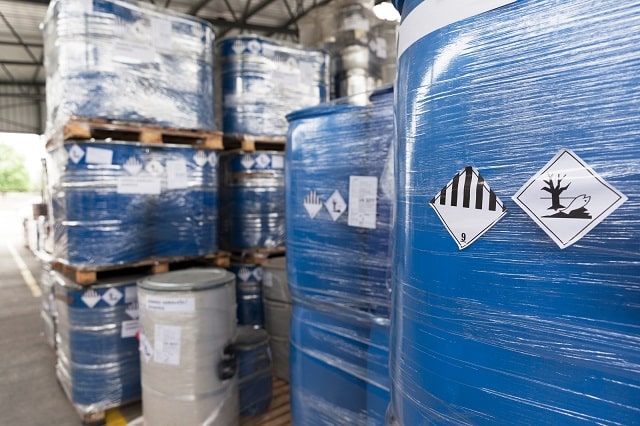Chemical management is an important part of facility management for businesses that transport, manage, and store hazardous materials. Unlike many other types of assets and materials, chemicals must be closely monitored to reduce the likelihood of safety issues related to compatibility or unexpected leaks. When systems are properly designed and implemented, it’s possible to work with chemicals in a safe and controlled environment.
In this post, we’ll take a look at 7 chemical management best practices that will help you review your own internal procedures. These tips are helpful for identifying potential improvements and considering new ways of organizing material handling, vendor management, and safety workflows. You will also see a strong priority placed on organizing procedures and the use of centralized systems to improve communication and fulfill compliance requirements.

Vendor management is a challenge when working with chemicals due to the unique purity requirements that may be needed for each material. Once suitable vendors are qualified, it’s important to develop close relationships with your most vital suppliers. This not only helps when sharing demand forecasts and negotiating prices but may also be useful to simplify the procurement process. Some suppliers may have automated systems for their key customers that will allow you to process orders more quickly.
Depending on the level of chemical handling that your operation supports, it may be necessary to monitor the local environment for potentially hazardous risks. This may include the installation of monitoring technology to measure air quality, exhaust contamination, and the presence of chemical fumes or gasses. In addition to proper safety equipment, workplace monitoring is an excellent and proactive way to help protect your staff from potential exposures.
Chemical waste is a necessary byproduct of facilities that manage and work with chemicals. In many situations, chemical waste disposal can be one of the largest costs associated with chemical management. For this reason, it’s crucial to try and minimize the amount of waste that is produced. There may also be ways to treat and process the waste locally to reduce the support needed from third-party waste pickup and disposal services. Waste management should most certainly be a critical part of your chemical management planning process.
Safety data sheets (SDS) are a vital chemical management resource and should be properly maintained and updated periodically. These reference documents are needed most during chemical exposures, leaks, or other safety incidents. It’s important that your local environmental health and safety (EH&S) team and any responding parties have access to accurate chemical handling information. One of the best ways to achieve this is using a centralized document management platform where you can assign an owner to each document and schedule periodic reviews.

Inventory management is especially important when stocking chemicals. A centralized chemical management system should be used to store essential information for each container that is kept onsite. A great way to control your chemical inventory is to mark each container with a unique asset barcode that can be easily scanned at any time.
Given the nature of the materials the containers store, durable barcode labels such as Metalphoto® anodized aluminum asset tags are a good choice as they offer the durability needed to withstand potential exposure to chemicals and solvents while remaining readable throughout the expected lifespan of your chemical containers and totes. Tagging containers reduces the time needed when performing inventory counts and makes it much easier to locate associated information such as SDS documentation, lot numbers, and certificates of analysis when needed.
Employees who work in areas where chemicals are present should be fully trained on all necessary procedures. Your training program should also provide a hands-on walkthrough of these facility locations to note safety hazard communication (HazCom) signs and other important notifications. This also gives you an opportunity to familiarize employees with the SDS management system and where they can find personal protective equipment (PPE) and safety documents when needed.
Most chemical containers in a facility will need to be transported to different rooms where work is performed. It is therefore important to remind employees of chemical storage procedures to prevent any materials from being left in an unsafe location. Some examples include placing chemical containers near hallways, in direct sunlight, or in improper storage cabinets. Reinforcing your storage procedures with clear signage also helps to remind everyone where to place chemical containers during and after use.
Chemical management is a complex process that requires input and support from several company departments. Encouraging a culture of continuous improvement will help your employees develop innovative new ways to handle these materials while maintaining a safe working environment. We hope these tips and best practices make a difference in your own chemical management efforts.
Our sales engineers are experts in automatic asset tracking, tagging and identification,a nd can answer all your questions. Get in touch now.
Lets Talk ›